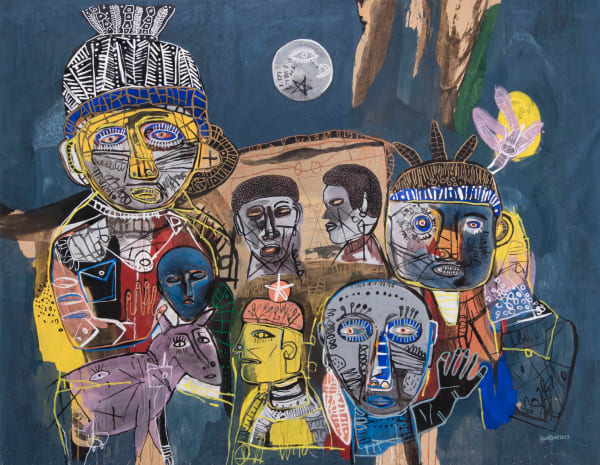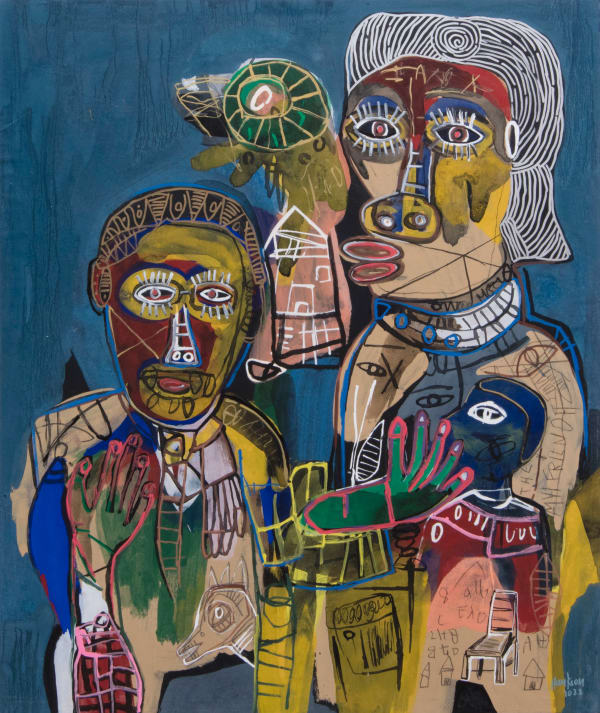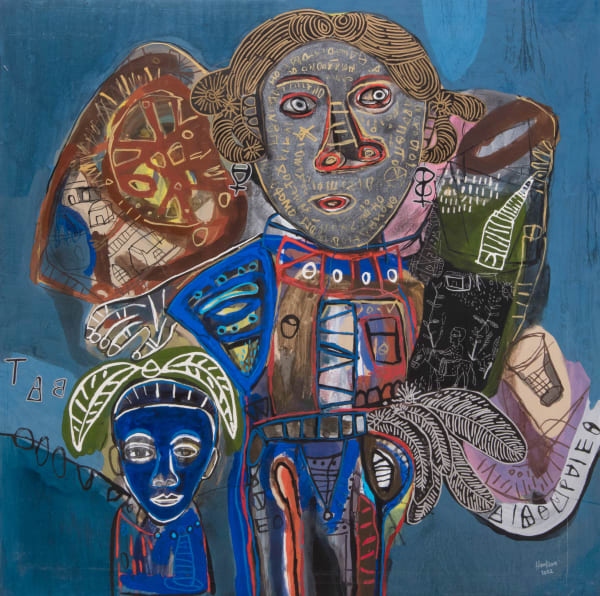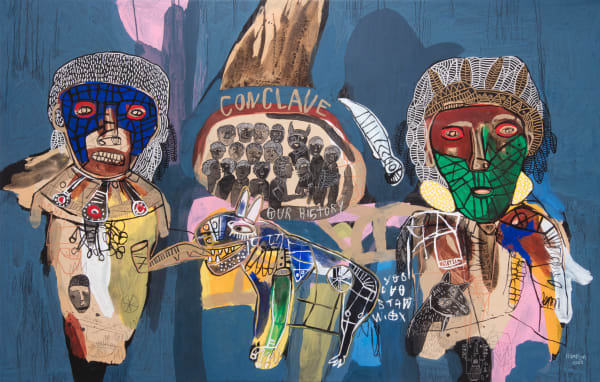The Lost Legacy: Hako Hankson
Hako Hankson's works possess an essential recognisability, the use of masks, tribal figures, the careful choice of colours and the abundance of details and decorations make his works a concentration of Africa. They are distinct and carefully delineated elements that narrate, through expressions and compositions, the cultural history of this continent.
The use of masks stems from a profound philosophy of life, practised and recognised by Hako Hankson, handed down to him by his father: animism.
"My father, for his part, drew me into animist beliefs: for example, by using masks and statuettes in a dialogue with the afterlife, and that's how I came to understand the power of masks, what they could carry as a spirit, a soul, something subtle that we can't control."
His works have an intrinsic narrativity, in fact, although the viewer sees well-defined elements, plots and fantasies develop on the canvas enriching the aesthetic beauty of the masks. One often comes across human figures, convivial scenes depicted as if they were small visions within the works themselves. This indicates a link that Hako Hankson has always wanted to express: animism uses elements, such as masks, to converse with the afterlife and thus take on a spiritual, as well as an earthly character, acting as a bridge between soul and body.
In the artist's canvases there are flashes of humanity, gatherings, human figures in their individual form, or other elements, even animals, which always strictly maintain an almost rupestrian line of representation.
In fact, Hako Hankson's works also turn their attention to the past, underlying which is an important creative study of ancient African graphic descriptions. Not far removed from what are, for us, rupestrian paintings. In this way, the artist expresses a strong attachment to his land, communicating it to the Africans, showing their gaps and problems, almost in a codified language that, only thanks to a strong globalisation, becomes familiar to us as well, reminding us of American or European artists who, by appropriating a very similar imagery, revolutionised western aesthetics.
Hako Hankson's painting addresses his homeland, but at the same time he wants to export what he sees as contemporary Africa to the world, narrating it through elements of what Africa used to be, maintaining its tribal nature.
In his works, the artist describes what has always surrounded him, through a universal language that is as clear as it is intricate.
It goes back to its origins, narrating different situations and characters, as humanity once did, but evolves its language, enriches it and complicates it to make it future-oriented. In this way, it attracts the interest of the viewer, who loses himself in the immensity of the details.
"The lost legacy" is about just that, a collective imagination of an Africa that was the cradle of civilisation, that has handed down its distinctive elements all over the world, but that in the 20th-21st century is in trouble, as it is increasingly losing its cultural attachment to its roots.
Hako Hankson's message also speaks of prosperity and evolution, indicating how, if rediscovered, this new language can lead the African continent to a prosperous and flourishing future.

























